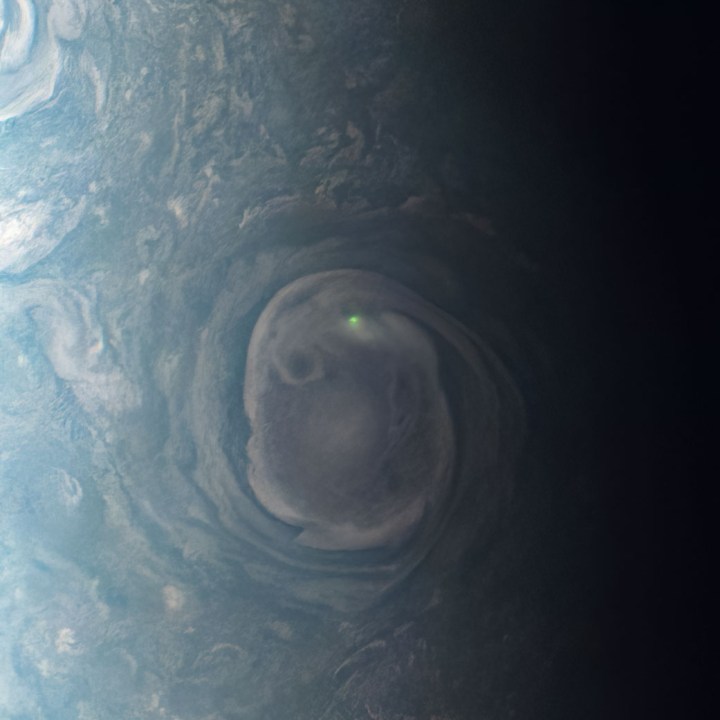NASA’s Juno mission has become a favorite among space fans for its JunoCam instrument which often captures gorgeous images of the beauty of the planet Jupiter and its moons. Earlier this year the spacecraft made its 49th close flyby of the planet, and NASA recently released some more stunning images taken as it whizzed by the planet’s cloud tops.
The first image was taken as the spacecraft made its close flyby on March 1, showing the complex structures in the cloud tops of the planet’s atmosphere. NASA explains that the image shows “bands of high-altitude haze forming above cyclones in an area known as Jet N7.” Cyclones are a common feature on Jupiter, particularly near the poles, and a formed due to differences in atmospheric pressure which cause parts of the atmosphere to rotate. Here you can see a number of cyclones, which rotate clockwise, but it is also common to observe anticyclones, which rotate counterclockwise.

The Jet N7 region of Jupiter is located in the northern hemisphere and has been previously observed to have strong storms in its atmosphere. The image was taken when Juno was around 5,095 miles (8,200 kilometers) above the cloud tops, and the processing for the image was done by a citizen scientist, Björn Jónsson.
The raw images from JunoCam are all made publicly available, and if you want to try your hand at image processing yourself then you can look at the image processing gallery and website.

Another striking image recently captured by JunoCam shows a vortex near Jupiter’s north pole. The flash of green in the center of the image is the glow from a bolt of lightning, which is known to exist in the planet’s atmosphere. Here on Earth, lightning occurs mostly at lower altitudes and is created by clouds of water vapor which build up static charge. On Jupiter, however, the clouds contain ammonia in addition to water, which allows lightning to form at higher altitudes as well.
This image was taken from a little further out, when the spacecraft was 19,900 miles (32,000 kilometers) from the cloud tops on December 30, 2020. It was processed by Kevin M. Gill, who specializes in JunoCam images. There should be more images from JunoCam coming in the next few months, as the Juno spacecraft comes close to Jupiter and passes over its night side, possibly catching more lightning as it happens.
Editors’ Recommendations
Services Marketplace – Listings, Bookings & Reviews